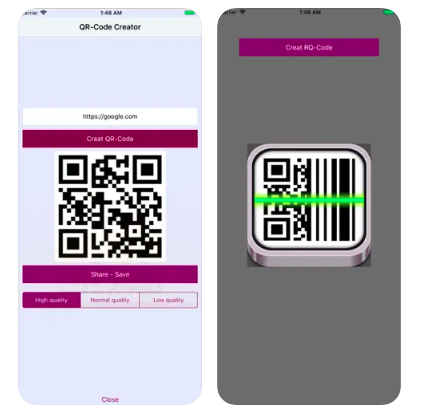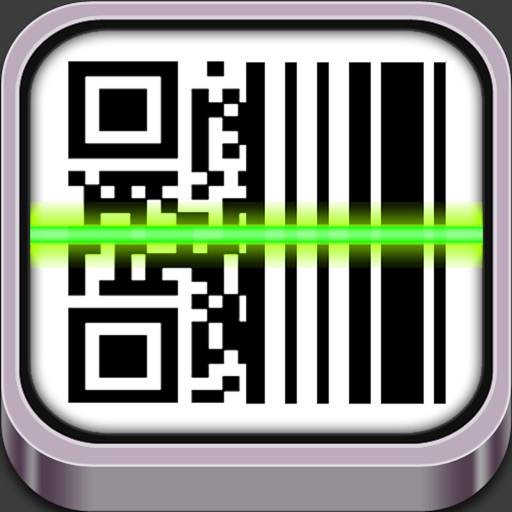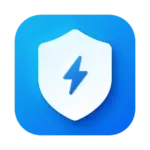QR-codes have become an essential tool for bridging the gap between physical and virtual experiences. From restaurants offering menus to event organizers sharing ticket information, these little squares hold a wealth of possibilities. But did you know that QR-codes can also be used to distribute apps directly to your iOS devices? Enter the QR-Code IPA—a powerful innovation that simplifies app sharing in ways we’ve only begun to explore.
Imagine effortlessly accessing your favorite applications by simply scanning a code with your iPhone or iPad. The convenience doesn’t stop there; this method offers unique benefits that traditional distribution methods can’t match. Whether you’re a developer eager to promote your latest creation or just someone looking for easy access to cool apps, understanding how QR-Code IPAs work is key. Let’s dive deeper into this exciting development and discover what it means for the future of app distribution on iOS!

What is a QR-Code IPA?
A QR-Code IPA is an innovative way to distribute iOS applications using QR-codes. Essentially, it combines the convenience of quick access with the functionality of apps.
When you scan a specific QR code, it triggers the download or installation of an IPA file directly onto your device. This process eliminates traditional app store hurdles and restrictions.
The beauty lies in its simplicity. Users don’t need to search through multiple platforms for their favorite apps; a simple scan does the trick. It’s particularly useful for developers wanting to share beta versions or custom builds without going through lengthy approval processes.
This method not only saves time but also enhances user experience by making app acquisition seamless and efficient. As mobile technology evolves, solutions like QR-Code IPAs are becoming increasingly relevant in everyday usage.
Benefits of using a QR-Code IPA for iOS devices
Using a QR-Code IPA for iOS devices streamlines the app installation process. Instead of navigating through multiple steps, users can simply scan a code and access their desired application instantly.
Convenience is another significant benefit. Users can bypass the App Store’s restrictions and download apps that might not be available there. This flexibility opens doors to numerous applications tailored to specific needs or preferences.
Security also plays an essential role. Many QR-Code IPAs are generated by trusted sources, providing peace of mind when downloading software. Also, users have greater control over what they install on their devices.
Moreover, sharing apps becomes easier with QR-Codes. Friends or colleagues can quickly share new applications without cumbersome links or lengthy instructions, fostering collaboration and discovery in a seamless manner.
How to Install QR-Code IPA with Sideloadly
Installing a QR-Code IPA using Sideloadly is quite straightforward. First, ensure you have the latest version of Sideloadly installed on your computer. This tool simplifies the sideloading process for iOS apps.
Connect your iPhone or iPad to the computer via USB. Open Sideloadly and select your device from the dropdown menu. You’ll need to drag and drop your QR-Code IPA file into the application window.
Next, enter your Apple ID credentials when prompted. This step is essential for signing the app securely before installation. If you’re wary about privacy, consider creating a secondary Apple ID just for this purpose.
Once everything is set up, click on “Start” to begin the installation process. The app should install within minutes, ready for use on your device without any hassle involved in traditional app distribution methods.
QR-Code IPA MOD For iOS iPhone, iPad
QR-Code IPA MOD brings a new level of convenience to iOS users. This modified version enhances the functionality of standard QR-Code applications, unlocking features that elevate user experience.
With this mod, users can generate and scan codes effortlessly. It allows customization options for design and data encoding, making it perfect for businesses wanting to stand out.
Privacy is another significant advantage. The QR-Code IPA MOD often includes enhanced security settings, ensuring your scanned information remains private and secure.
Installation is straightforward for those familiar with sideloading techniques. Users can seamlessly update their apps without going through the App Store’s restrictions.
This tool not only simplifies tasks but also opens doors to innovative uses of QR-Codes in everyday life. Whether you’re sharing contact info or promoting products, this mod makes everything smoother and more engaging on your iPhone or iPad.
Comparison with other methods of distributing apps
When it comes to distributing apps, there are several traditional methods at our disposal. The most common route involves using app stores like Apple’s App Store or Google Play. While these platforms offer extensive reach, they also come with strict guidelines and lengthy approval processes.
Another popular option is direct downloads from websites. This method can bypass some of the restrictions imposed by app stores but often requires users to adjust their settings for security purposes. It may deter less tech-savvy users who fear compromising their device’s safety.
Email distribution is yet another alternative, allowing developers to send apps directly to users. However, this method lacks scalability and can quickly become unmanageable as user numbers grow.
QR-Code IPA offers a sleek solution that combines ease of use with efficiency, standing out against these conventional methods by streamlining access while maintaining control over app distribution.
Conclusion: The future of app distribution using QR-Codes
Download QR-Codes IPA For iOS are becoming a pivotal part of how we interact with applications. The rise in mobile device usage coupled with the convenience of QR-Code integration offers exciting prospects for app distribution. With the ability to quickly scan and install apps without cumbersome processes, users can access services more efficiently than ever.
QR-Code IPAs present a seamless method for distributing applications on iOS devices. They eliminate many barriers that traditional app stores create, providing developers with new avenues to reach their audience directly. This direct approach not only enhances user experience but also fosters innovation among developers eager to experiment outside conventional frameworks.
The landscape of app distribution is shifting towards simplicity and accessibility. As more people become familiar with scanning QR-codes as part of their daily routines, this trend will likely grow stronger. Embracing this change could redefine how apps are developed and shared across platforms.
With all these developments, it’s clear that integrating QR-Codes into our digital ecosystems will pave the way for a smoother interaction between users and applications in the near future. The potential is vast, making it an exciting time for both consumers and creators alike as they explore what lies ahead in this rapidly changing technological environment.






Leave a Comment